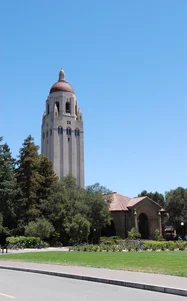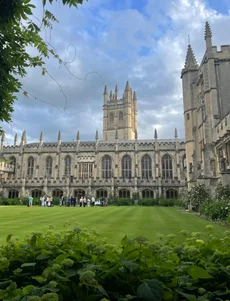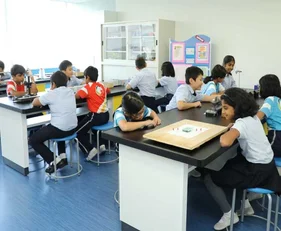Education is an important aspect in our lives. Nowadays, all countries do not want to lag behind each other in any way. We have seen that there are several countries where universities in the country have established primary and high schools to improve their education system.
Why do universities open primary and secondary schools? These universities usually operate primary and high schools as a center for there research laboratories. These universities usually conduct primary and high schools to see how students study in real time, how students use their strategies to adopt new educational teaching methods, their educational curriculum and the educational strategies that students have learned.
Universities conduct examinations for students to see what they have learned. The main goal of universities is to help students move from the bottom to the top by providing education (in other words, to improve their lives by providing education to students). These universities usually operate primary and high schools as a research or laboratory.
History of Why Universities Open Primary and Secondary Schools?
The idea of universities running primary and high schools is not new in any way. This tradition is not from the present time, this tradition of running schools by universities has been going on for many years, that is, it can be said that this tradition has been going on for centuries.

We never think that universities run only primary schools, do universities not only teach children A, B, C, D, E, F, G. These universities run high schools along with primary schools. Many universities were like this many centuries ago, these universities did not only teach adult students, but also wanted to from an education system for their students from the beginning.
Among them, in 1896, the University of Chicago established a laboratory school to form an education system for students from the beginning. This idea of replacing schools with universities spread throughout the European continent, then across the Asian continent.
It then become very common for schools attached to universities to provide teacher training. What I, Yasmina Khatun, saw and after seeing, I realized that there are schools for many children that cannot properly prepare children for the real classroom.
University-run schools provide a safe and secure environment for children to practice under the supervision of teachers, and then confidently and accurately observe them as they enter the world of full-time education.
We usually call these university-run schools “laboratory or demonstration schools”. At the same time , teachers can influence a student’s learning journey from childhood to studying for a master’s, engineering , doctorate or other subjects, and help them achieve their multifaceted goals later in life.
A Universities have several key goals for schools: (1) to educate all students by hand, (2) to provide a high-quality education to students, (3) to improve and educate the environment for students to pass, and (4) to achieve academic results that are higher than those of exceptional schools.

The governance structures of these schools are usually linked to multiple units, with collaborative partnerships to establish public schools in different parts of the district, with primary schools for general children and high schools for other students.
Looking ahead, they are improving them by utilizing technologies with the help of artificial intelligence to meet the needs of the workforce and advance modern education. Many universities require several real -life classrooms where teachers can teach and students can effortlessly experience and learn in order to effectively train future teachers.
Currently, there are several countries that have universities that are using these schools as a research laboratory to improve their primary and secondary schools. These countries include: (1) the United States (where there are more than 205 university-run schools), (2) the United Kingdom, (3) China, (4) Japan, (5) India, and (6) Africa, among others.
Primary and Secondary Schools Opened by Universities in Different Countries?
University-affiliated Schools:
| University Name | Country Name | Primary and Secondary School Name |
|---|---|---|
| University of Chicago | United States (USA) | Laboratory School |
| Stanford University | United States (USA) | Stanford Online High School |
| Oxford University | United Kingdom (UK) | Oxford High School |
| Oxford University | United Kingdom (UK) | Magdalen College School |
| University of Cambridge | United Kingdom (UK) | Cambridge University Primary School |
| University of Cambridge | United Kingdom (UK) | King’s College School |
| National University of Singapore | Singapore | NUS High School of Math and Science |
| University of Florida | United States (USA) | PK Yonge Developmental Research School |
| Louisiana State University | United States (USA) | Louisiana State University Laboratory School |
| Columbia University | United States (USA) | Teachers College Community School |
| University of Tokyo | Japan | University of Tokyo Secondary School (Todai Kiyoiku Gakubu Fuzoku Chuto Kiyoiku Gakko) |
| Keio University | Japan | Keio Senior High School (Keo Gijuku Koto Gakko) |
| Beijing Normal University | China | Beijing Normal University High School (BNU Experimental High School) |
| Tsinghua University | China | Tsinghua University Affiliated High School |
| Jawaharlal Nehru University | India | JNU Model School |
| University of Toronto | Canada | Dr. Eric Jackman Institute of Child Study Laboratory School |
| University of Melbourne | Australia | University High School |
| University of the Philippines | Philippines | UP Integrated School (UPIS) |
| National Autonomous University of Mexico (UNAM) | Mexico | National Preparatory School |
In addition, the University of Cambridge in the United Kingdom (UK) runs several primary and secondary schools. Other prestigious institutions in Canada include the University of Toronto Schools, and the University of Sydney, which runs several schools as research laboratories.
Universities in France and Germany have relationships and cooperation with secondary and upper secondary school, both Belgium and the Netherlands operate schools to improve laboratory schools, and the Middle East Technical University in Turkey operates several K-12 schools to improve primary, secondary and upper secondary schools to improve the education model.

Schools run by universities in countries like United States, the United Kingdom, Germany, Mexico, France, India, China, Turkey, Africa, Singapore, Canada, Philippines, Japan, and Brazil have been able to improve the environment for students and their learning.
Among all these countries, America alone has more than 205 universities that have been able to improve schools by running schools with a long-term focus.
Peking University directly supports the development of secondary and high schools, including their institutions, by providing funding, while universities such as Jamia Millia Islamia and Banaras Hindu University in India run schools under their administration.
Universities such as Cairo University in Egypt, the University of Ibadan in Nigeria, and the University of Pretoria in South Africa have affiliated schools for experimental educational training. Indiana University focuses on supporting and supporting laboratory schools.
In Argentina, the University of Buenos Aires runs secondary schools to prepare students for university education. The University of São Paulo in Brazil also supports laboratory schools out of love.
McGill University (Montreal) in Canada has established accredited schools for student research to improve their teacher training. The Université de Paris in France, and several other French universities, have affiliated schools in several ways.